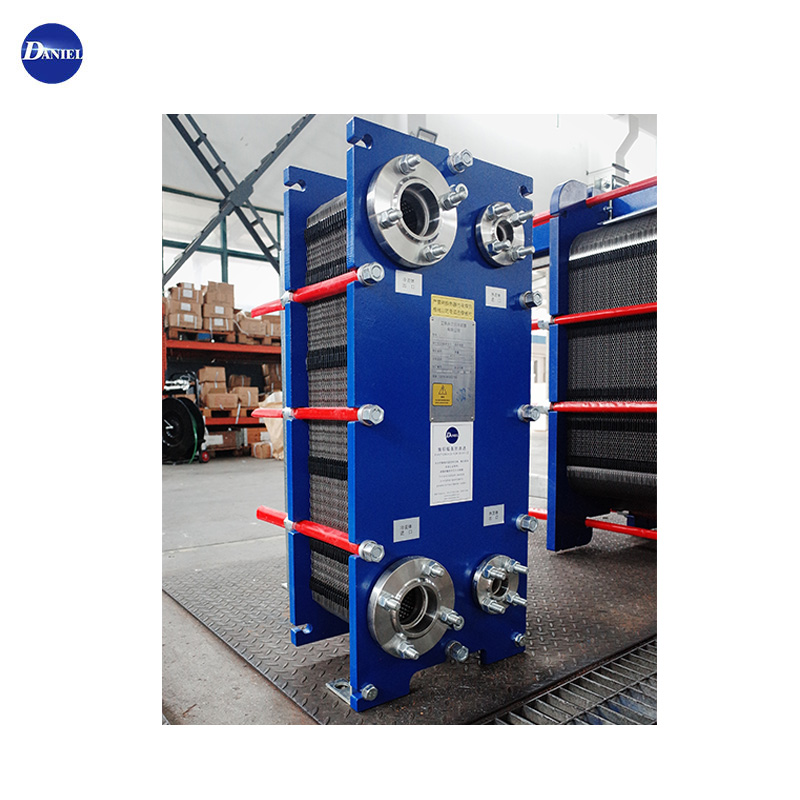How Does a Plate Heat Exchanger Work?
2025-07-10
Plate heat exchangers are widely used across various industries for their efficiency, compact design, and versatility in transferring heat between two fluids. Whether used in HVAC systems, food processing, chemical plants, or industrial machinery, plate heat exchangers play a vital role in optimizing energy use and improving thermal control. But how exactly do they work?
Let’s take a closer look at the working principle of a plate heat exchanger and why it’s such a popular choice for efficient heat transfer.
What Is a Plate Heat Exchanger?
A plate heat exchanger (PHE) is a type of heat exchanger that uses thin metal plates—typically stainless steel or titanium—to transfer heat between two fluids without mixing them. These plates are stacked closely together with narrow flow channels, allowing for high thermal conductivity and efficient heat exchange in a relatively small footprint.
The Basic Principle: Heat Transfer Through Plates
The core concept of a plate heat exchanger is simple: two fluids at different temperatures flow through alternate channels, separated by thin plates. Heat naturally moves from the hotter fluid to the cooler one through the plate surfaces.

Here’s how it works step by step:
1. Fluids Enter from Separate Inlets
Two different fluids—usually a hot and a cold one—are introduced into the exchanger through separate inlet ports. The flow paths are arranged so that the fluids alternate between the plates (e.g., hot-cold-hot-cold).
2. Plates Create Parallel Flow Channels
Each plate has a series of ridges or patterns (chevron designs are common) that create turbulence and enhance heat transfer. The plates are assembled with gaskets or welded to direct the fluid into the correct channels and prevent leakage or mixing.
3. Heat Moves Through the Plate Material
As the hot fluid flows over one side of a plate and the cold fluid flows over the opposite side, heat is transferred through the plate from the hotter side to the cooler side. The plates are thin, so the heat transfer is fast and efficient.
4. Fluids Exit at Adjusted Temperatures
After passing through the exchanger, both fluids exit at temperatures closer to each other—the hot fluid has cooled down, and the cold fluid has been warmed up, depending on the system’s goal.
Counterflow for Maximum Efficiency
Many plate heat exchangers are designed for counterflow, meaning the hot and cold fluids move in opposite directions. This setup maximizes the temperature gradient across the plates, allowing for more efficient heat transfer compared to parallel flow (where both fluids move in the same direction).
Why Use a Plate Heat Exchanger?
Plate heat exchangers offer several advantages:
High Efficiency: The large surface area of the plates allows for rapid and effective heat transfer.
Compact Design: PHEs take up less space than shell-and-tube exchangers, making them ideal for confined installations.
Flexibility: Plates can be added or removed to increase or decrease capacity as needed.
Easy Maintenance: Many models can be disassembled easily for cleaning, inspection, or gasket replacement.
Low Fluid Volume: The small internal volume allows for faster temperature changes and quicker system response.
Common Applications
HVAC systems: Used to recover heat, cool or heat air and water efficiently.
Food and beverage: Ideal for pasteurization and maintaining temperature-sensitive processes.
Chemical processing: For temperature control during reactions and material handling.
Marine and power generation: Used to cool engines, generators, and lubricants.
A plate heat exchanger works by channeling hot and cold fluids through alternating thin metal plates, allowing efficient heat transfer without mixing the two substances. Its compact size, high thermal efficiency, and adaptability make it a preferred solution in countless industries.
Whether optimizing energy usage in a factory or improving climate control in a building, plate heat exchangers continue to prove themselves as indispensable components in modern thermal systems.


